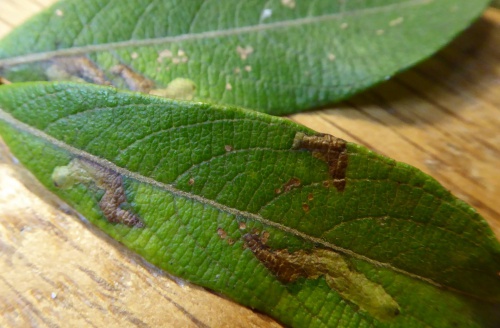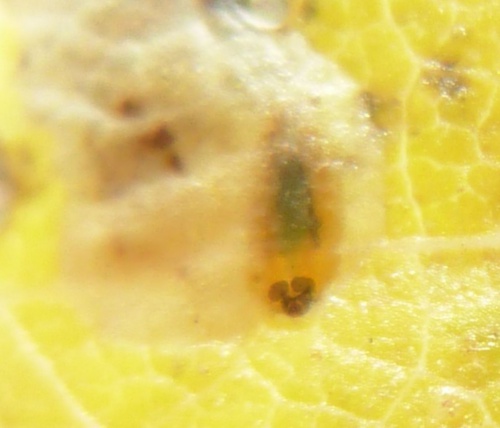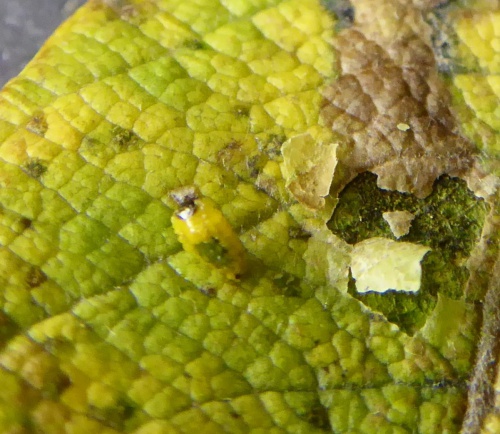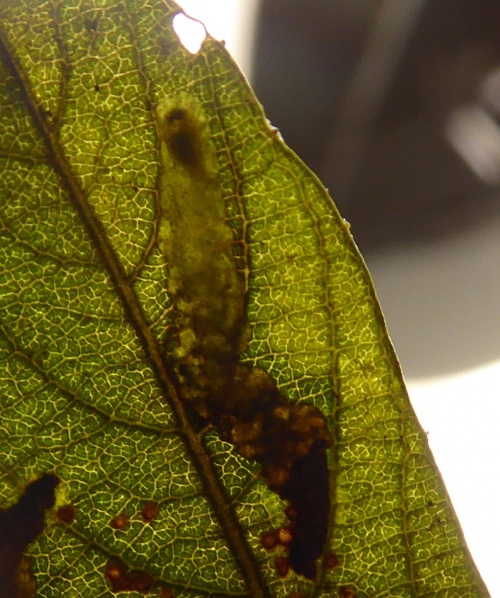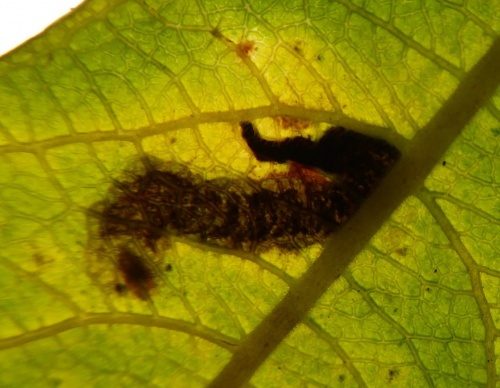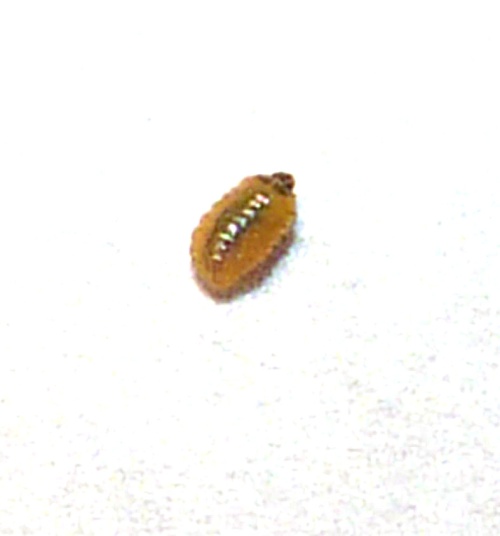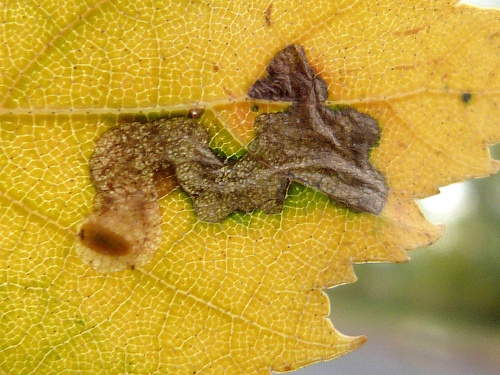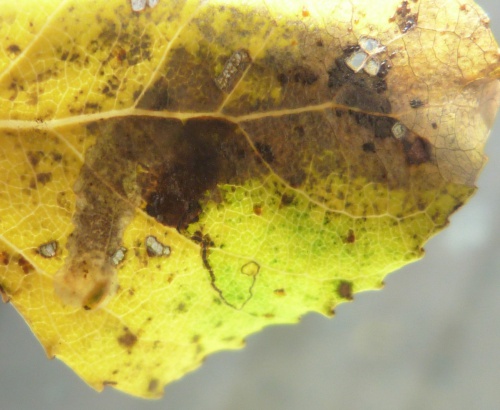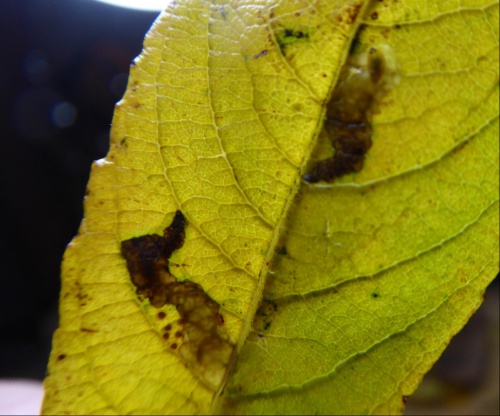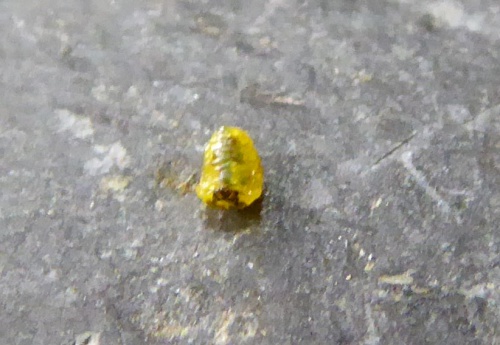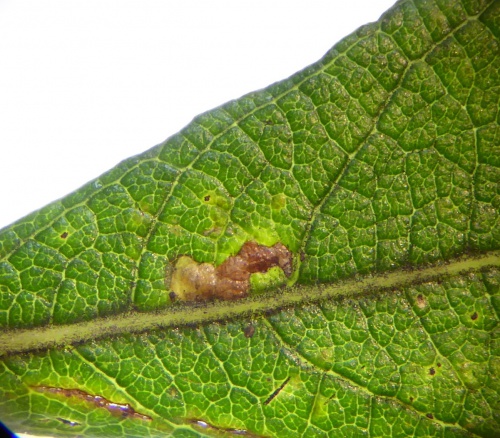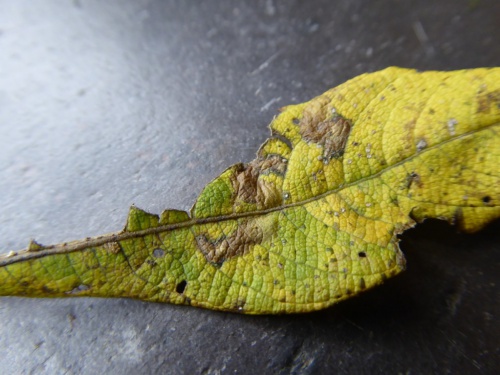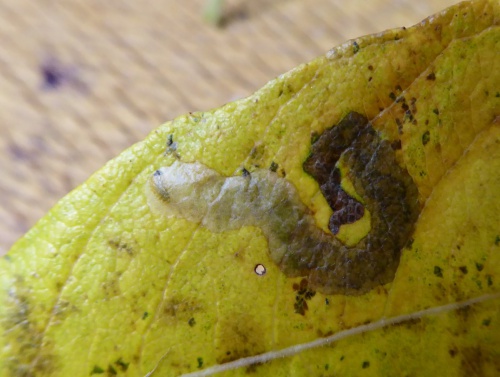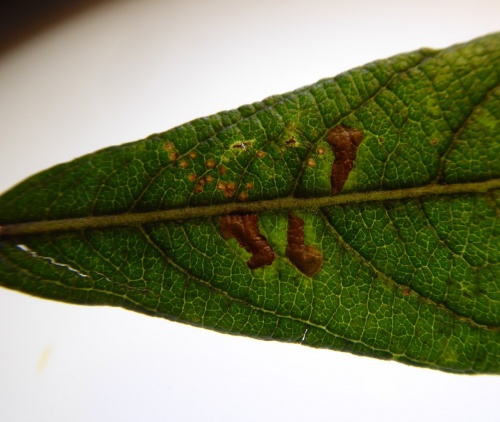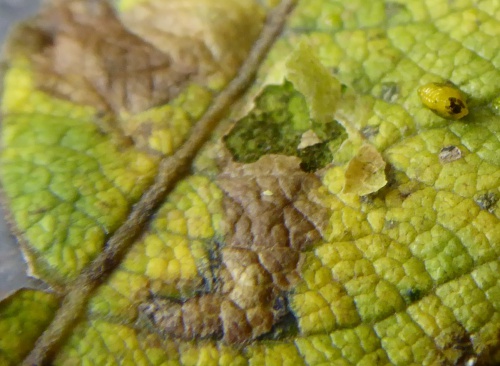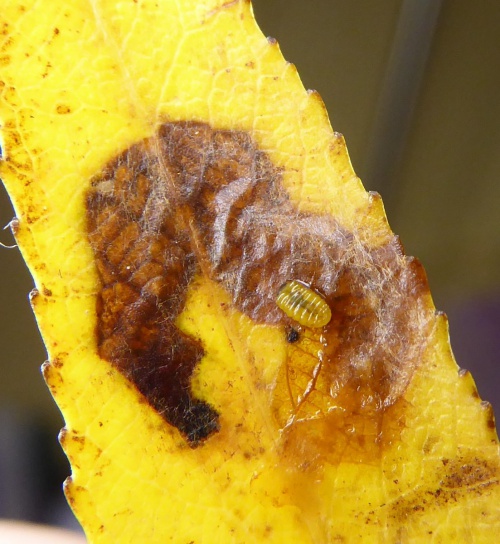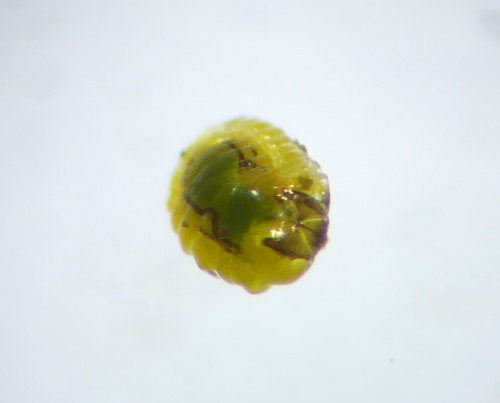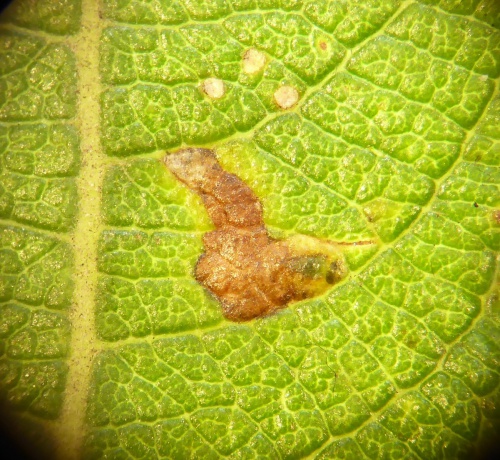Rhamphus pulicarius
A small black weevil 1.4 to 2 mm, with heavily punctured elytra. Short broad mines are formed by the larva, most often on sallows. The larva is small, squat, and yellow or orange in colour, with a dark head, and mines sallow, poplar or ocasionally birch leaves, in a short, broad gallery becoming a blotch; often pear-shaped.
Several species of moths also mine leaves of sallows, birch and poplar
Adult: Unless identified by a recognised expert, photographic evidence is required and the specimen should be examined with a microscope. In the comments box, state the key or ID method used. Note the beetle's size and describe the identifying characters. It is advisable to retain the specimen in case further checks are needed. Mine: provide a good backlit photograph that shows the larva inside the mine, and state the host plant.
Where the larval foodplants - Birch, Willow, and Poplar - occur.
The larval mines can be seen from August to October.
The larva feed on Birch, Willow, and Poplar producing a mine in the leaves.
Widespread, particularly in the southern half of Britain.
Only occasionally recorded in Leicestershire and Rutland.
Leicestershire & Rutland Map
Enter a town or village to see local records
MAP KEY:
Yellow squares = NBN records (all known data)
Coloured circles = NatureSpot records: 2025+ | 2020-2024 | pre-2020
UK Map
Species profile
- Species group:
- Beetles
- Kingdom:
- Animalia
- Order:
- Coleoptera
- Family:
- Curculionidae
- Records on NatureSpot:
- 21
- First record:
- 21/10/2018 (Timms, Sue)
- Last record:
- 05/11/2025 (Calow, Graham)
Total records by month
% of records within its species group
10km squares with records
The latest images and records displayed below include those awaiting verification checks so we cannot guarantee that every identification is correct. Once accepted, the record displays a green tick.
In the Latest Records section, click on the header to sort A-Z, and again to sort Z-A. Use the header boxes to filter the list.


